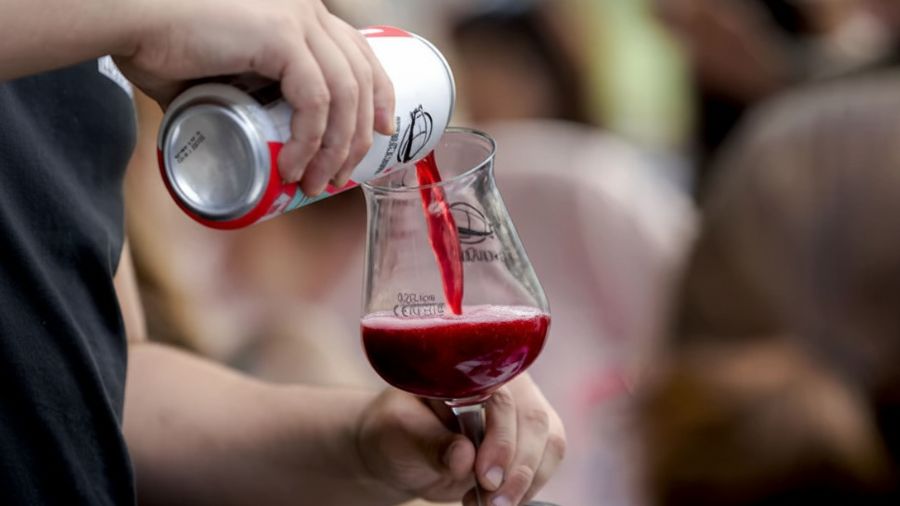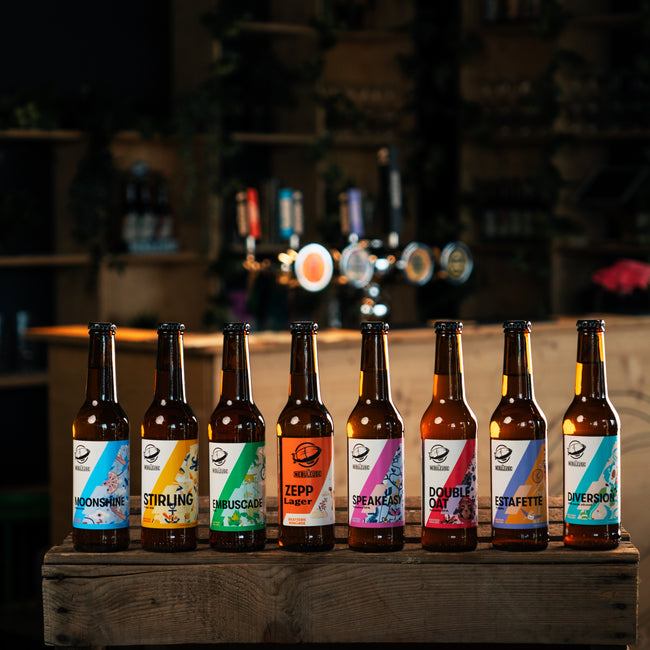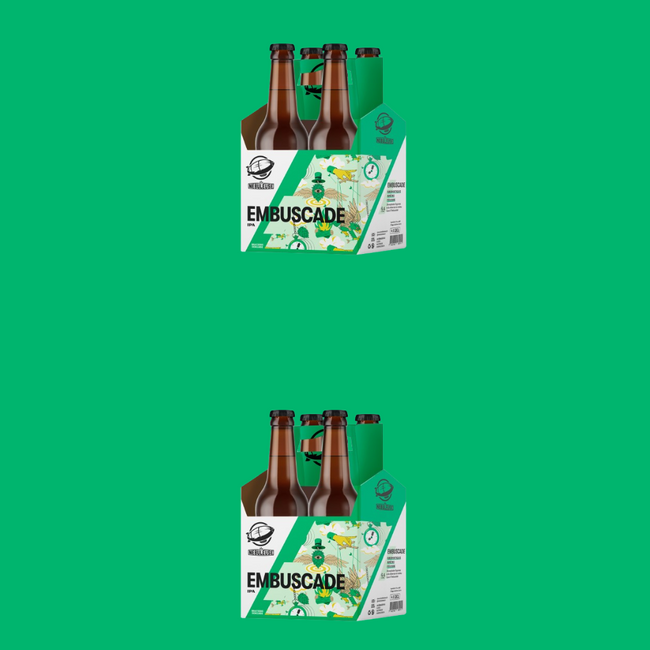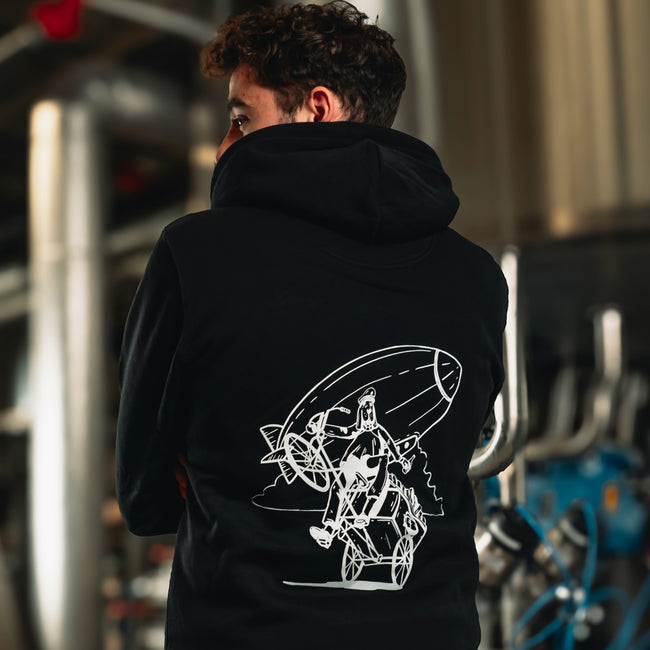The right glass for the right beer

You've carefully selected your craft beers and prepared delicious accompaniments for your tasting evening , but have you thought about the glasses? This often-overlooked detail can radically transform the tasting experience. Far from being a simple purist's coquettishness, the choice of glass directly influences our perception of the aromas, the visual appearance and even the texture in the mouth of the beer.
The Evolution of Beer Glasses: History and Tradition
The history of beer glasses reflects our evolving relationship with this age-old beverage. From simple, functional vessels made of wood or clay, we've progressed to containers specifically designed for each beer style.
It was with the emergence of the great European brewing traditions that the first specialty glasses emerged. Each region developed its own standards: the massive Bavarian tankard, the elegant Belgian chalice, or the robust English pint—all designed to highlight the particular characteristics of local beers. These regional differences reflect a collective wisdom, born of centuries of observation and experimentation by generations of brewers and consumers.
The contemporary craft beer movement has revolutionized this approach. Collaborations between brewers and glassmakers have given rise to containers optimized to maximize the sensory experience of each style. The Teku, this elegant universal glass created in 2006, perfectly symbolizes this new philosophy, where the glass becomes a true tasting instrument.
How glass transforms the experience
The choice of glass influences the tasting experience across several sensory dimensions.
A narrow-mouthed glass , like the Belgian tulip, focuses the aromas toward the nose , making it ideal for complex beers like Belgian Strong Ales or Imperial Stouts. Conversely, a wider-mouthed glass allows more direct aromas to express themselves freely, making it ideal for refreshing IPAs or wheat beers.
Shape also shapes the tactile experience. It influences the formation and persistence of foam, an essential element that gradually releases aromas while providing a creamy texture. Effervescence is directly affected by the geometry of the container. Some modern glasses even incorporate nucleation zones—tiny engravings that maintain the release of bubbles and aromas.
Visual appeal also plays a fundamental role. A high-quality, transparent glass highlights the color, clarity, and effervescence, creating a seductive first impression even before the first sip.
Essential glass/beer pairings
To get the most out of each style, certain combinations are particularly harmonious.
Pint or tankard glasses enhance lagers and pilsners while preserving their characteristic freshness. La Nébuleuse's Zepp , a craft lager with delicate floral notes, thrives perfectly in this type of glass, which highlights its sparkling clarity while preserving its invigorating effervescence. Its ideal service at 6°C in a very cold pint allows it to express all its finesse without being masked by excessive cold.
Tulip and chalice glasses , with their upward taper, enhance Belgian beers. Estafette , a Belgian triple with aromas of banana and apricot, reveals all its complexity in a tulip glass that concentrates its aromas while allowing its generous foam to flourish.
For IPAs and other hoppy beers, glasses, often conical with a slight curve, capture and direct the hop aromas. The Embuscade , an IPA with notes of blood orange and resin, and the Double Oat , a Double IPA with tropical flavors, find their optimal expression in these containers that exalt their essential hop oils.
The Teku has established itself as a versatile glass for almost any modern style thanks to its balanced shape. Its design combines elegance and functionality, making it an excellent investment for enthusiasts.
Some practical advice
Glass cleanliness plays a fundamental and often underestimated role. Even the slightest trace of grease can ruin foam formation, while detergent residue can alter aromas. Clean with a mild, fragrance-free detergent and rinse thoroughly. Before serving, quickly rinse the glass with cold water to promote a beautiful foam.
Serving temperature significantly influences our perception. Contrary to popular belief, not all beers benefit from being iced. Lagers and pilsners are generally enjoyed between 4 and 7°C, but more complex beers like stouts or Belgian ales reveal their nuances between 8 and 13°C.
When pouring, tilting the glass at a 45° angle initially and then gradually straightening it generally produces an ideal head. This method limits oxidation while releasing just the right amount of volatile aromas. For lovers of generous head, particularly with Belgian or German beers, a second, more vigorous pour from the center of the glass after a pause can create that spectacular creamy crown that is an integral part of the visual and taste experience.
Current trends and innovations
The world of beer glasses continues to evolve with constant innovations: thinner yet stronger materials, precisely laser-etched nucleation zones, and ever more refined designs.
Aesthetics are becoming increasingly important, transforming glass into a true collectible. Craft breweries are collaborating with designers to create glasses that extend the identity of their products, strengthening the overall brand experience.
Environmental concerns also influence this sector, with growing interest in glasses made from recycled materials or using less energy-intensive processes.
Glass: the essential companion for tasting
The choice of glass represents that final touch that can transform a good beer into a memorable experience. It's not a matter of elitism, but simply of making the most of each creation and paying homage to the work of the brewers.
Now that you understand the importance of glass and know how to organize a perfect tasting evening, you have all the elements to offer a complete beer experience, where every nuance will be fully appreciated.
The next time you uncork a fine craft beer, take a moment to select the appropriate glass. Your beer will thank you by revealing all its subtleties, because in the world of tasting, the container is truly part of the experience.









